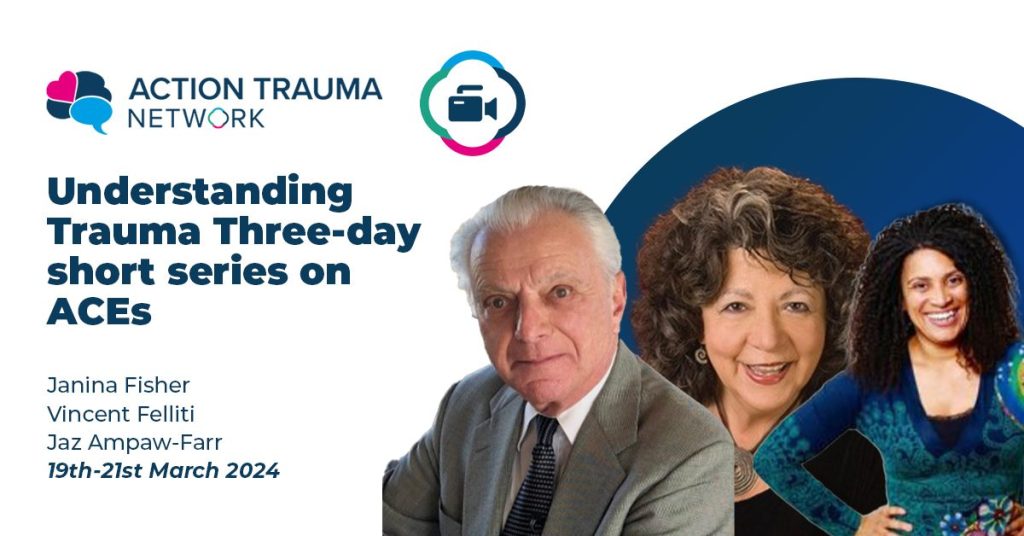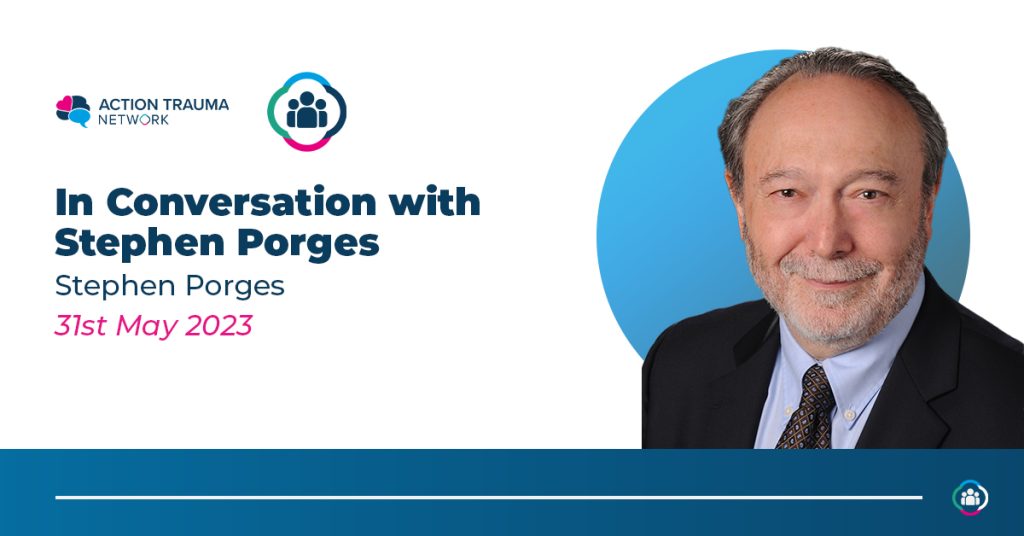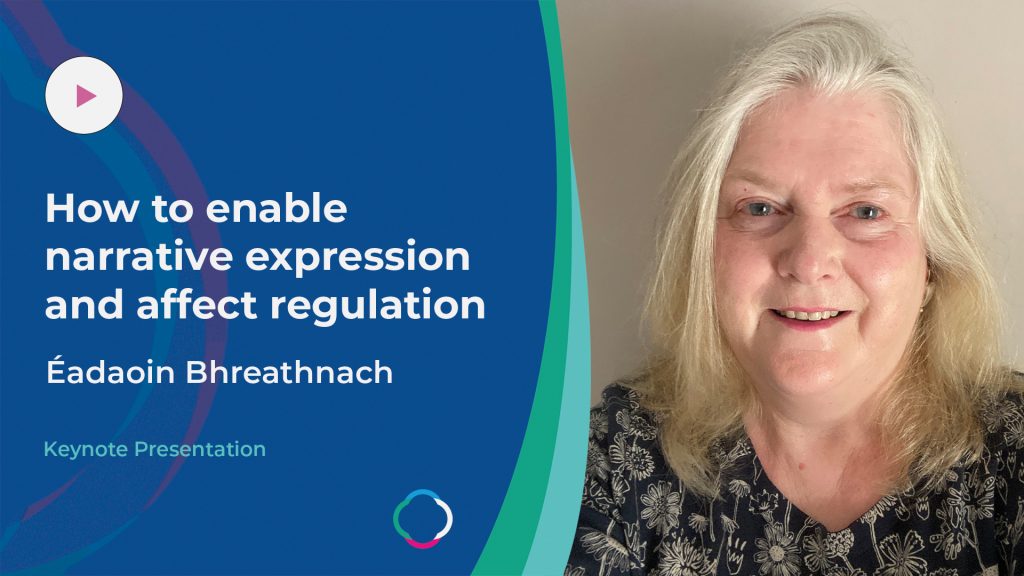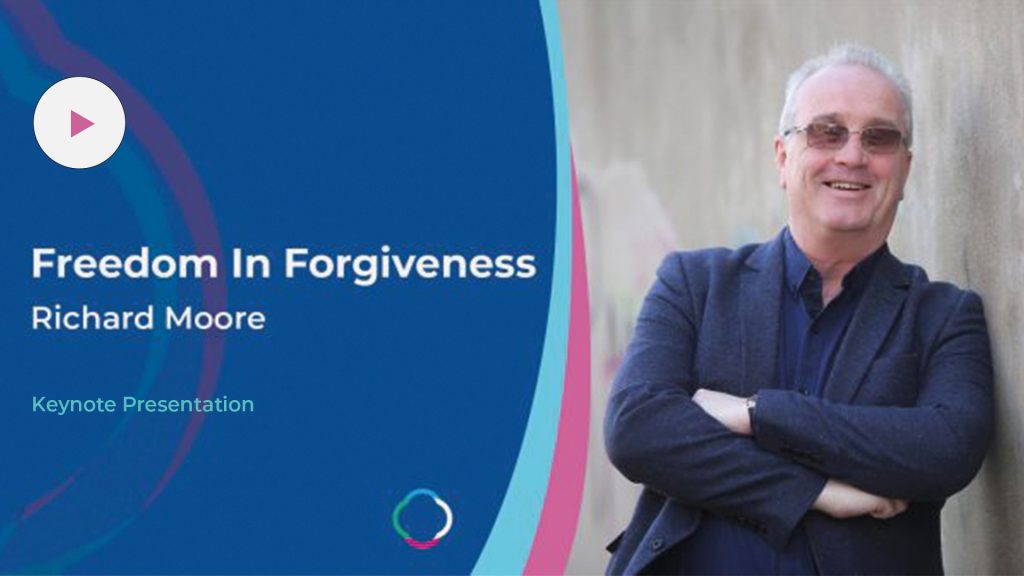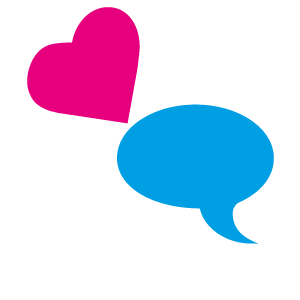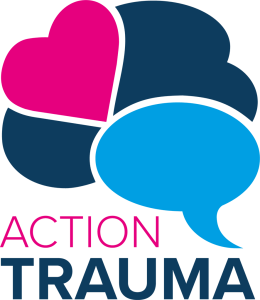ACEs Study Chadwick Document

CHILD MALTREATMENT | SEXUAL ABUSE AND PSYCHOLOGIAL MALTREATMENT THE LIFELONG EFFECTS OF ADVERSE CHILDHOOD EXPERIENCE
“They do not want to hear what their children suffer. They’ve made the telling of the suffering itself taboo.” Alice Walker, Possessing the Secret of Joy. This chapter will document how adverse childhood experiences play a major and lifelong role in the difficulty, effectiveness, and cost of adult medical practice, and are the major origin of numerous important public health, medical, and social problems. In all of these areas, the relationship between adverse childhood experiences and adult well being ordinarily goes unrecognized. Our evidence comes from the Adverse Childhood Experiences (ACE) study, a collaborative effort between Kaiser Permanente and the Centers for Disease Control (CDC) involving over 17 000 adults in a major retrospective and prospective epidemiologic analysis. The ACE study reveals how 10 categories of adverse life experience in childhood have a demonstrable impact, decades later, on health risks, disease burden, social malfunction, medical care costs, and life expectancy. This chapter will show that events that are lost in time, and then further protected by shame, secrecy, and social taboos against exploring certain areas of human experience, cost us heavily in health, humanity, and dollars. Routinely integrating the inquiry about, acknowledgement, and discussion of traumatic life experiences into the medical history has major benefits to patients, and is generally welcomed by them, though it is often uncomfortable for physicians. This professional discomfort has secondary ramifications in limiting the availability of such information in medicine, social work, and in the law enforcement, legislative, and judicial systems.
“They do not want to hear what their children suffer. They’ve made the telling of the suffering itself taboo.” Alice Walker, Possessing the Secret of Joy. This chapter will document how adverse childhood experiences play a major and lifelong role in the difficulty, effectiveness, and cost of adult medical practice, and are the major origin of numerous important public health, medical, and social problems. In all of these areas, the relationship between adverse childhood experiences and adult well being ordinarily goes unrecognized. Our evidence comes from the Adverse Childhood Experiences (ACE) study, a collaborative effort between Kaiser Permanente and the Centers for Disease Control (CDC) involving over 17 000 adults in a major retrospective and prospective epidemiologic analysis. The ACE study reveals how 10 categories of adverse life experience in childhood have a demonstrable impact, decades later, on health risks, disease burden, social malfunction, medical care costs, and life expectancy. This chapter will show that events that are lost in time, and then further protected by shame, secrecy, and social taboos against exploring certain areas of human experience, cost us heavily in health, humanity, and dollars. Routinely integrating the inquiry about, acknowledgement, and discussion of traumatic life experiences into the medical history has major benefits to patients, and is generally welcomed by them, though it is often uncomfortable for physicians. This professional discomfort has secondary ramifications in limiting the availability of such information in medicine, social work, and in the law enforcement, legislative, and judicial systems.
ORIGINS OF THE ACE STUDY
The ACE study had its origins in our repeated counterintuitive experiences while operating a major obesity-reduction program using the technique of supplemented absolute fasting, which allows weight to be reduced non-surgically at approximately the rate of 300 lbs per year.1 We repeatedly found many patients fleeing their own success when major weight loss occurred. We were forced to recognize that eating has major psychoactive benefits that are obvious enough to be built into the language: “Sit down and have something to eat; you’ll feel better.” Many of our patients had a significant need to feel better, though these rarely surfaced spontaneously and hence were not known. Further exploration led to discovering the protective benefits of obe-sity. We slowly discovered that many of these patients had life experiences for which being obese was protective. If one has a need to de-sexualize oneself, as in a reaction to rape or childhood sexual molestation, then gaining a hundred pounds is an effec-tive approach. A former rape victim who gained 105 pounds in the year subsequent to her rape commented: “Overweight is overlooked, and that’s the way I need to be.”
Similarly, being larger than others can project a sense of power, as illustrated in the common expression, “Throwing your weight around.” Interviews with our obese patients unexpectedly led to discovering myriad long-term medical effects of seriously troubled childhoods. Such histories were almost never documented in their medical records. The high prevalence of abusive life experiences in the childhoods of our obese patients ultimately led us to consider to what degree this might also be the case in a general population. The ACE study was devised to de-termine in a general, middle-class, adult population the prevalence of 10 categories of stressful, traumatic childhood experiences that we had found so common in our obese population. And further, to determine what, if any, the additional long-term effects of these experiences might be. These clinical observations at Kaiser Permanente’s Department of Preventive Medicine in San Diego dovetailed with new approaches to understanding the emotional underpinnings of behavior and disease that had recently emerged at the CDC among studies of nationally representative samples of US adults. Among these studies were: linking self-reported stress to the incidence of peptic ulcer disease,2 discovering the higher prevalence of smoking and lower incidence of quitting among persons who are depressed,3 and finding an increased incidence of coronary heart disease among persons experiencing hopelessness.4 The combination of clinical observations at Kaiser Permanente (KP) and the public health approach using the tools of medical epidemiology at the CDC proved to be a powerful combination in designing the ACE study and quantifying and interpreting the observed long-term effects of ACEs. The Department of Preventive Medicine at Kaiser Permanente in San Diego provided an unusual resource for carrying out such a study in its Health Appraisal division. At the time the ACE study began in 1995-1997, over 50 000 adults a year voluntarily chose to come for periodic comprehensive medical evaluation. This evaluation in-cluded detailed medical history, extensive laboratory testing, and complete physical examination. In any 4-year period, 81% of the adult members in San Diego chose to avail themselves of this service. The ACE study consisted in our asking two groups of such adult Kaiser Health Plan members, each consisting of 13 000 consecutive individuals requesting such health appraisal, whether they would help us understand how childhood experiences might affect health later in life. We explained that we would also track their medical records prospectively to follow their clinical courses forward in time. The study was carried out in two separate waves to allow mid-point revision if necessary. Almost 70% of those asked agreed to participate in the ACE study. All persons had high-quality health insurance from Kaiser Health Plan. Average age was 57 years with a range from 26 into the nineties. Almost exactly half were men, half women. Approximately 80% were white including Hispanic, 10% black, 10% Asian; 74% had attended col-lege. This was clearly a middle-class American population, and not one that could be dismissed as “not in my practice.” This may have a bearing on the deep intellectual interest the findings of this study have generated, as well as on the resistance to using them in practice. Approval of the ACE study was slowed by institutional review board (IRB) concern that some patients might emotionally decompensate when faced with the intrusive questions that we proposed to ask by questionnaire about childhood experiences. Colleagues assured us that patients would be furious when faced with these types of questions and they believed that patients would be unlikely to respond truthfully. IRB agreement was ultimately obtained by arranging to have a responsible person carry a cell phone 24 hours a day for 3 years to accept emergency calls from those putative persons who might decompensate when asked about the reality of their lives. However, no phone calls were received. Instead, we had a number of patient compliments and a small collection of letters, one written on lined paper by an elderly woman: “Thank you for asking. I feared I would die and no one would ever know
what had happened.”
Ten categories of adverse childhood experiences were queried by the 4-page ACE study questionnaire that was mailed home to participants after they had filled out and submitted a lengthy general medical questionnaire. Inquiry in the ACE questionnaire was specifically limited to the first eighteen years
of life and initially consisted of eight categories. Three categories Survey Wave II were of abuse: physical abuse (not spanking), contact sexual n=13 000 abuse, and emotional abuse (typically recurrent humiliation). Five categories involved major household dysfunction. These consisted of growing up in a household: where the mother was treated violently; from which a household member was imprisoned; in which a member was alcoholic or a drug user; where a member was seriously depressed, suicidal, or mentally ill; and where the biological parents had separated or divorced. In the second wave of the study, two categories were added relating to major emotional and physical neglect. Specifics of the actual questions are provided in the first ACE study publication.5 An ACE score was created which summed the number of categories that were experienced. The number of incidents or events within an ACE category was not summed. The ACE score can thus range from 0 to 8 in the first wave, and from 0 to 10 in the second group of 13 000 patients who were invited to participate. Surprisingly, the ten categories turned out to be essentially co-equal in terms of measured long-term effects. The conceptual design of the ACE study is depicted in Figure 10-1. ACE scores, the number of categories (not incidents) of adverse childhood experienc-es, represent the self-acknowledged prevalence of traumatic life experiences during the childhoods of the 17 337 middle class adults in our study cohort. The prevalence of traumatic life experiences in childhood and adolescence was far higher than had been conceived. In retrospect, there was no basis for any opinion in terms of the preva-lence of ACEs, because such information is well protected by shame and secrecy, and we had previously been inhibited by our own ignorance against the routine explora-tion of certain areas of human experience. Prevalence data for the 10 ACE categories is presented in Table 10-1. One readily sees that only 33% had an ACE score of 0, while one in six adults acknowledged an ACE score of 4 or more categories during


childhood. The question, of course, is whether this matters. Doesn’t time heal? Aren’t children resilient?
However, we were to find that, in this realm, time does not heal. Rather, time con-ceals, and resilience is real but partial, and is too commonly attributed, merely because of the achievement of focal economic or social success.
This chapter will approach the biomedical relevance of adverse childhood experiences to various outcomes, first by addressing common health risks underlying disease, then disease itself, and finally death. Subsequently, this chapter will address the emotional toll and the social effects of adverse childhood experiences.
HEALTH RISKS
The harmful effects of smoking tobacco have been widely recognized for the past five decades. Nicotine is considered an addicting substance, addiction being defined as the unconscious, compulsive use of psychoactive agents. A more colloquial explanation of addiction is that people find it difficult to get enough of something that almost works to alleviate stress, worry, anxiety, or any similar negative experience. Generally, addiction has been thought to be due to a substance having unspecified molecular properties that act on the brain, resulting in some form of capture from repeated exposure. Indeed, nicotinic receptors are widespread in the brain, supporting this concept. Given the popularity of the belief that addiction is substance-dependent, it is thus easy to overlook the significant differences in life experiences between individuals, underlying the likelihood of their compulsive use of certain commonly available substances like nicotine, alcohol, or street drugs.6
The ACE study found that the likelihood of current smoking in San Diego, a city with heavy public health pressures against smoking, is directly proportionate to ACE score.7 This is illustrated in Figure 10-2, and is not compatible with addiction being
Figure 10-2. Adverse childhood experiences vs. smoking as an adult. All graphics have a p value of .001 or better.
Figure 10-3. Adverse childhood experiences vs. alcoholism.

simply due to repeated exposure to nicotine.
Alcoholism has major biomedical and social ramifications that are generally accepted as consequences of the addicting qualities of alcohol. Among the multiple ACE questionnaire items refer-ring to alcoholism, the most direct was Question 18, “Have you ever considered yourself to be an alcoholic?” Figure 10-3 illustrates the proportionate relationship to self-acknowledged alcoholism of developmental life experiences captured in the ACE score.8 If the addicting qualities of alcohol were intrinsic to the substance, there would not be this strong, proportionate relationship to an individual’s ACE score.
The strongest relationship of the ACE score to addiction is seen with injection of street drugs.6,9 The long-term impact of injection drug use is heavily medical and social, with major involvement of law enforcement. It is commonly believed that repeated use of many street drugs will in itself produce addiction. Our findings challenge those views. Figure 10-4 shows the dramatic and proportionate relationship of ACE score to self-acknowledged injection drug use. At ACE score 6, there is a 4600% increase in the likelihood of later becoming an injection drug user, compared to the likelihood at ACE score 0. Several epidemiologists at CDC described this intense relationship of injection drug use to prior traumatic life experiences as being of a magnitude seen once in a career.
The nature of the relationship between the ACE score and intravenous drug use strongly suggests that addiction has relatively little to do with supposed addicting properties of certain substances, other than their all providing a desirable psychoactive relief. Rather, it is clear that the ameliorating effect that is being sought is proportionate to the sum of the number of categories of traumatic life experiences suffered. In other words, this is an understandable attempt at self-treatment with something that almost works, thus creating a drive for further doses. An additional insight may be obtained by realizing that the demonized crystal meth is the very same psychoactive chemical, methamphetamine, which was first introduced in the US as a prescription antidepressant by Burroughs Wellcome in 1940 under the brand name Methedrine. Amphedroxyn was the Lilly brand name.
Figure 10-4. Adverse childhood experiences vs. intravenous drug use.

The broad public health perspective brought by the collaboration of Kaiser Perma-nente with CDC led to the inclusion of a wide array of health behaviors, disease risk factors, and health outcomes into the design of the Adverse Childhood Experi-ences study: eg, obesity, inactivity, promiscuity, liver disease, and mortality. Further information about them, their relationship to antecedent life experiences, and their consequences may readily be found in seventy ACE study publications, most of which are abstracted at the CDC’s ACE study web site: http://www.cdc.gov/ACE/index.htm.
Ultimately, one sees that many of the more serious public health problems, while indeed undesirable for society, are also unconsciously attempted solutions to personal problems that are unrecognized because they are lost in time, and further protected by shame, by secrecy, and by social taboos against exploring certain realms of human experience and activity. This represents a public health paradox wherein the public health problem is also a personal solution. This public health paradox underlies many of our most difficult current problems in medicine and public health: in general people are not eager to give up the thing that comes closest to helping, especially at the behest of those who have no idea what has gone on in their lives. As an example, some people continue to smoke in the face of life-threatening pulmonary or cardiovascular disease.10 Given the reality of some people’s lives, it is important to at least try to understand that not everyone wishes to serve out a full life sentence, and that help is sometimes best given by understanding than by trying to impose superficial advice.
BIOMEDICAL DISEASE
In the three prior examples of easily recognized health risks, there is a pathway that transmutes life experience in childhood to biomedical disease in adult life. The relationship of smoking, alcoholism, and use of illicit drugs to subsequent disease is too obvious to belabor; these coping devices are major intermediary mechanisms leading to disease. Traumatic life experiences in childhood, captured by the ACE score, appear to be a major cause underlying the unconscious selection of those substances that are used because of their psychoactive benefits. Their risks are certainly major, but distant. Most of us understand that when stresses are sufficient, the future will often be sold out to obtain current relief. Nevertheless, in spite of the routine co-occurrence of opposing forces in nature, many find it difficult to accept that the same substance may have both good and bad qualities. As physicians we often approach complex and difficult behavioral problems by paying attention to only half the equation, and so we are at a significant disadvantage.
In looking at common disease outcomes like chronic obstructive pulmonary dis-ease (COPD) and coronary artery disease (CAD), one may recognize that not every person with COPD has been a smoker, nor does everyone with CAD have the under-lying risk factors identified in the Framingham study. This raises the question: what causes their disease? In coronary artery disease, approximately 10-15% of cases have none of the currently recognized underlying risk factors. However, when ACE scores are evaluated in this group, nine of the ten categories of adverse childhood experience are found to be associated with a distinct increase in the likelihood of coronary disease in adult life, even in the absence of the Framingham risk factors.11 This indicates a sec-ond major pathway leading from life experience in childhood to biomedical disease in adult life: the effect of major unrelieved stress over prolonged periods of time. It is a pathway that is currently under extensive study; its ultimate limits and ramifications are yet to be worked out.
In an analysis of 21 different autoimmune diseases, it was possible to demonstrate a proportionate relationship between ACE score and the likelihood of developing autoimmune diseases decades later in adult life.12 Our evolving understanding of these mechanisms involves adverse early life experiences affecting development of
Figure 10-5-a. Adverse childhood experi-ences vs. depression.
Figure 10-5-b. Estimates of the population attributable risk of adverse childhood experi-ences for selected outcomes in women.
Figure 10-5-c. Adverse childhood experi-ences vs. 50-year antidepressant use.

the brain, thus altering the complex inter-relationship of neu-ral, endocrine, and immune systems.13 Recently, it has become increasingly clear that the dyscontrol resulting from chronic stress in these systems causes the release of pro-inflammatory cytokines, chemicals which cause inflammatory changes endothelial lining of minute blood vessels thereby blocking cir-culation to tissues they ordinarily supply, resulting in various levels of scar formation and thus hypofunction.14,15
Although the demonstrated relationship of adverse childhood experiences to a lifetime history of fractures2 and liver disease16 is readily understandable via the intermediary mechanisms of drug-related accidents to fractures, and alcohol or hepatitis to liver disease, the basis for the proportionate relationship of ACE score to malignancy is more subtle.17 Once one gets beyond the relationship of smoking to lung cancer, we remember that all of us produce throughout our lives a low level of malignant cells that are processed out by our immune systems. Thus, “getting cancer” typically involves either an increased rate of production of malignant cells as in carcinogen exposure, or a decreased rate of clearance as in the immunosuppressed states required for organ transplantation. In recent years physicians have come to understand the role of major unrelieved stress in immunosuppression, both as a result of prolonged high levels of circulating cortisone analogues and by ultimate dysregulation of the hypothalamic-pituitary-adrenal axis with its effects on the immune system.15
Given the above examples of the proportionate, dose-response relationship of ACE score to later biomedical disease, and not even including the upcoming relationship of traumatic child-hood experiences to later suicide, it is not surprising that life expectancy would be shortened. Indeed, in the prospective arm of the ACE study, it was found that experiencing six or more categories of adverse life experience in infancy, childhood, or adolescence shortens an individual’s life expectancy by almost twenty years.18
EMOTIONAL DISORDERS
That abusive life experiences should produce subsequent emotional disturbance is hardly unexpected, but the breadth, depth, and chronicity of those outcomes was distinctly greater than anticipated.19-21 Depression, suicidality, chronic anxiety, amnesia, and hallucinations exemplify most of our findings in this area. Figure 10-5-a illustrates the pervasive relationship of childhood experiences to self-acknowledged chronic depression decades after the fact. Not all chronic depression can be traced to childhood, but when the population attributable risk was studied to estimate how much of the problem can be traced to childhood experiences, one can see that it is a major component (see Figure 10-5-b). Figure 10-5-c shows that antidepressant use on average a half-century later is still strongly related to childhood experiences. As Barbour has perceptively stated, depression is not a disease but a normal response to abnormal life experiences.22 The fact that neurochemical changes are demonstrable illustrates the necessary intermediary mechanisms for depression to manifest itself, not its causality. Mistaking mechanism for cause is a temptingly comfortable error to be avoided if advances in understanding are to be made.
A similar proportionate relation exists between childhood experiences and suicide at-tempts later in life, and is illustrated in Figure 10-6. At ACE score 7 and higher there is a dramatic increase in the likelihood of attempted suicide as compared to ACE score 0: a 31-fold or 3100% increase.23
It appears inescapable that a major portion of depression and attempted suicide can be traced back to 10 categories of traumatizing life experiences in childhood. Further, prescription rates for anxiety-reducing medications approximately a half-century after childhood show a similar proportionate relationship to ACE score24 as was demonstrated for anti-depressant medication over the course of a lifetime (see Figure 10-7).
Amnesia is rarely considered in the complete medical history. Given that it is well-recognized as an unconscious response to trauma, this is a major oversight. Doctors often hear patients recount incidents of childhood memory loss. Figure 10-8 depicts the relationship of ACE score to partial amnesias of this type.25.
Figure 10-6. Adverse childhood experiences vs. suicidality.
Figure 10-7. Adverse childhood experiences vs. rates of anxioloytic prescriptions.
Figure 10-8. Adverse childhood experiences vs. impaired memory of childhood.
Figure 10-9. Adverse childhood experiences vs. hallucinations.

Similarly, most of us would consider it insulting to patients to inquire routinely about hallucinations, and most psychotic individuals recognize it does not profit them to speak openly of hallucinating. Yet, when individuals are openly and routinely questioned in a population-based manner, there is a striking relationship of ACE score to later hallucinations (Figure 10-9). This is independent of alcohol or street drugs possibly being used to moderate a high ACE score, and hence being a possible source of the hallucinations.26
In Figure 10-10 (previously unpublished data), the relationship of multiple unexplained adult symptoms is presented in relation to a history of childhood sexual abuse. In addition to these clinical findings from the retrospective and prospective arms of the ACE Study, one recognizes that major economic costs are implicitly involved for individual care and for increasingly expensive prescription medications often used in treatment.
SOCIAL FUNCTION
Although toxic materials are certainly at many worksites, their number does not approach the number of toxic childhoods playing out at those worksites. These present in occupational medicine as unexplained symptoms, somatization disorders, absenteeism, or inadequate performance of ordinary tasks.27 Figure 10-11 shows the proportionate relationship of ACE score to self-rated inadequate performance of one’s job. The 2000 Nobel Laureate in Economics, James Heckman of the University of Chicago, has written extensively on the prolonged economic costs of these adverse childhood experiences.28
In a totally different social realm, we have documented the relationship of ACE score to promiscuity (Figure 10-12),13 and to multiple marriages (Figure 10-13).29 It seems clear that traumatizing life experiences during childhood are related to later
Figure 10-10. Childhood sexual abuse and the number of unexplained symptoms.
Figure 10-11. Adverse childhood experiences vs. serious job problems.
Figure 10-12. Adverse childhood experiences increase the likelihood of having 50 or more sexual partners.
Figure 10-13. Adverse childhood experiences increase the likelihood of having 3 or more marriages.

interpersonal instability, including of marital relationships, and that promiscuity can be understood as an ongoing quest for the one who will love me or a form of self-soothing akin to alcohol, nicotine, or drug use.
INTEGRATION OF ACE FINDINGS INTO PRACTICE
Ultimately, it became obvious that what was being uncovered in the ACE study was profoundly relevant to the organization, delivery, outcomes, and cost of everyday medical practice. Further, that the impact of adverse childhood experiences played out strongly in the social sector as well, involving prisons, homelessness, and juvenile delinquency. The photojournalist Susan Madden Lankford, working as an urban anthropologist, has documented these latter relationships in three recent books that are sampled at her website.30
Clearly, much of what we see in adult medical practice and as current major public health problems has its origins in what was present but unrecognized in pediatrics. There is a need to move from our current symptom-responsive approach in primary care to the comprehensive approach that was conceived but not attained—what George Engel described as a biopsychosocial approach.31 Stanford’s Victor Fuchs has noted that such comprehensive care requires information, infrastructure, and incentive. Already blessed with extensive infrastructure, our first move was to improve our routine information base by integrating trauma-oriented questions in the already lengthy and detailed biomedical questionnaire that our patients filled out at home before coming in for comprehensive medical evaluation. Our examiner staff correctly perceived that their performance bar had abruptly been reset to a higher level; two of thirty examiners left to work in other departments, while the others became highly capable at routinely dealing with thematic material that most of us avoid. Internist and family practice colleagues, while commonly finding the ACE study quite interesting, generally did not want to use its findings in practice, citing time factors and lack of training as explanations. Those in fee-for-service practice additionally cited lack of insurance coverage. While superficially plausible, we saw these often were cover excuses for deeper resistance, sometimes related to the awakening of personal ghosts, as well as discomfort in discussing topics we have all been taught are protected by social taboos related to sex and the privacy of family lives.
We too faced these issues, as did our staff of examiners. Nevertheless, we proceeded to develop a lengthy, well-conceived, general medical questionnaire with trauma-oriented components that patients filled out at home. When patients arrived in our Health Appraisal Center, this questionnaire was collected and fed into a digital scanner that took all Yes answers, organized them into a Review of Systems format, and provided a laser-printed medical history a few pages long that quickly enabled us to identify those areas needing further exploration or discussion. Because it was equally clear what body systems or areas did not need further exploration, the time we had was redirected and turned out to be adequate. This indeed was unexpected.
The fact that intimate life experiences, which previously had never surfaced because of our own discomfort and not because of time, could be brought up and discussed in the course of comprehensive medical evaluation was a tribute to the effect of a well-devised, highly detailed medical questionnaire that got the information out in the safety of the patient’s home, making it easier to bring it up for discussion in the doctor’s office. Our discussion was brief, commonly following the pattern of: “I see on the questionnaire that you were… Tell me how that has affected you later in your life.” Responses were typically a minute or two long, sometimes tearful, and often providing information that helped patients achieve new levels of understanding of their problems, and helped us understand what we might do to help.
After this expansion of our standard information base had taken place to include trauma-oriented questions, and we were satisfied with our new-found ability to make sense out of complex and confusingly intractable cases, an outside organization using the data mining technique of neural net analysis carried out a study of over 100 000 patients undergoing comprehensive medical evaluation with the new trauma-orient-ed medical questionnaire. The same physical examination and extensive laboratory testing were involved as before. Their findings showed a dramatic change that we had not anticipated.
In the year following comprehensive medical evaluation using the expanded question-naire with trauma-oriented components, there was a 35% reduction in doctor office visits (DOVs) and an 11% reduction in ER visits compared to the year-before visits of that large patient cohort. A control group from some years earlier, when the evalu-ation process was similar except that trauma-oriented questions were absent, showed an 11% reduction in DOVs (unpublished data). ER visits had not then been stud-ied. The obvious question was why this major change took place. Some physicians supposed these reductions in utilization were the result of patients being referred for psychotherapy, while others theorized that patients were avoiding needed medical care because they have been so humiliated by being forced to answer those questions.
Neither supposition has any factual basis. Almost no one was referred for therapy. Moreover, no complaints were heard and many patients were complimentary and grateful for the trauma-oriented approach. Obviously, some patients may have chosen to falsely answer No to trauma-oriented questions, but the number of Yes answers was so great that it was clear that an important new realm of the medical history had been uncovered. We thus came to see in adult medical practice the importance of the early years, the developmental years, and in particular the importance of damaging life experiences during those years. Gradually, we came to see that asking, listening, and enabling a patient to go home feeling still accepted, is in itself a major intervention. The clinical practice of asking, listening, and accepting is doing.
A profound change in disease patterns has occurred since the early 20th century when infectious and deficiency diseases were rife during childhood and were responsible for large portions of adult disease. Rheumatic heart disease has since been replaced by coronary disease, and the diseases of malnutrition have been replaced by diseases resulting from obesity. Polio, rickets, pellagra, and hookworm seem like ancient mem-ories, although they occurred within the lifetime of many of us.
Our current problems in medical practice are not only diagnostic and therapeutic but now are heavily economic. One of the most important insights derived from the Adverse Childhood Experiences study may be its demonstration of the major intellectual, economic, and emotional benefits that result from moving into realms of the medical history that are generally closed by social nicety. There are only three sources of diagnostic information in all of medicine: history, physical examination including observation of interpersonal relationships, and laboratory studies. While experienced physicians have long understood that history is the most important of the three, producing diagnosis about 80% of the time, our practice patterns tend to focus on laboratory studies. The reasons behind this are complex, involving time, insurance reimbursement, lack of experience, physician discomfort discussing certain areas of human life like sex or family experiences, and the heavily biomedical teaching approaches of medical schools. Although the numerous publications from the ACE study have attracted widespread intellectual interest, there has been significant resistance to integrating that information into clinical practice. Clinical integration, while intellectually straightforward, represents major personal and organizational change, and hence threatens a crisis in self-esteem as is discussed by the philosopher Eric Hoffer in his monograph, The Ordeal of Change.32
We have shown in one large and unusual Department of Preventive Medicine that such clinical integration is routinely possible. It is affordable, acceptable, and benefi-cial to patient, physician, and third party payer. We have now successfully used this comprehensive approach with 440 000 adult patients in one department over an eight-year period. And yet, it has not spread, even within Kaiser Permanente.
In spite of all our advances, do our current ways of medical understanding limit us as Kirkengen has eloquently argued from Norway?33 We have choices: we can change nothing in medical practice itself, even while making significant biomedical advances and engaging in politicized discussions about the economics of healthcare; we can attempt difficult emotional and physical repair work in patients, after the fact and on an enormous scale; or we can attempt true primary prevention. No one knows how to carry out primary prevention in this area, but it is the right problem to face.
SIGNS OF PROGRESS: ACE STUDY FINDINGS MOVE INTO
PUBLIC HEALTH APPLICATIONS
By contrast, efforts to integrate the ACE study findings into public health practice are meeting with encouraging success. Information from the ACE study is now rapidly gaining traction both nationally and internationally. The Centers for Disease Control and the World Health Organization (WHO) have begun to face the reality that adverse childhood experiences pose the major public health and social problem of our times.34 In his piercing book, Lost Lives, Helander has documented from his years at WHO the global prevalence of this problem.35
Surveillance studies are a powerful tool for putting new concepts on the state, national, and international agendas that lead to changes in policy and practice. The CDC- and state-based Behavioral Risk Factor Surveillance System (BRFSS) now offers standardized questions about ACEs that allow participating states to have their own population-based ACE study.36 Interest in the public health burden of adverse childhood experiences is growing state-by-state across the country. Starting in 2009, 18 states are now routinely gathering ACE information, and around the world countries are working with the CDC and the WHO to pilot test the use of ACE questions in health surveys. Information from such sources will lead to changed perspectives on health, and in improved understanding of the root causes of today’s most pressing public health problems. In spite of the complex problem of resistance to change, it is likely that public health will lead these changes well in advance of primary care medical practice.37 When the use of comprehensive medical history, including routine inquiry into traumatic life experiences in the developmental years, ultimately penetrates clinical primary care, it may be one of the major public health advances of our time.


